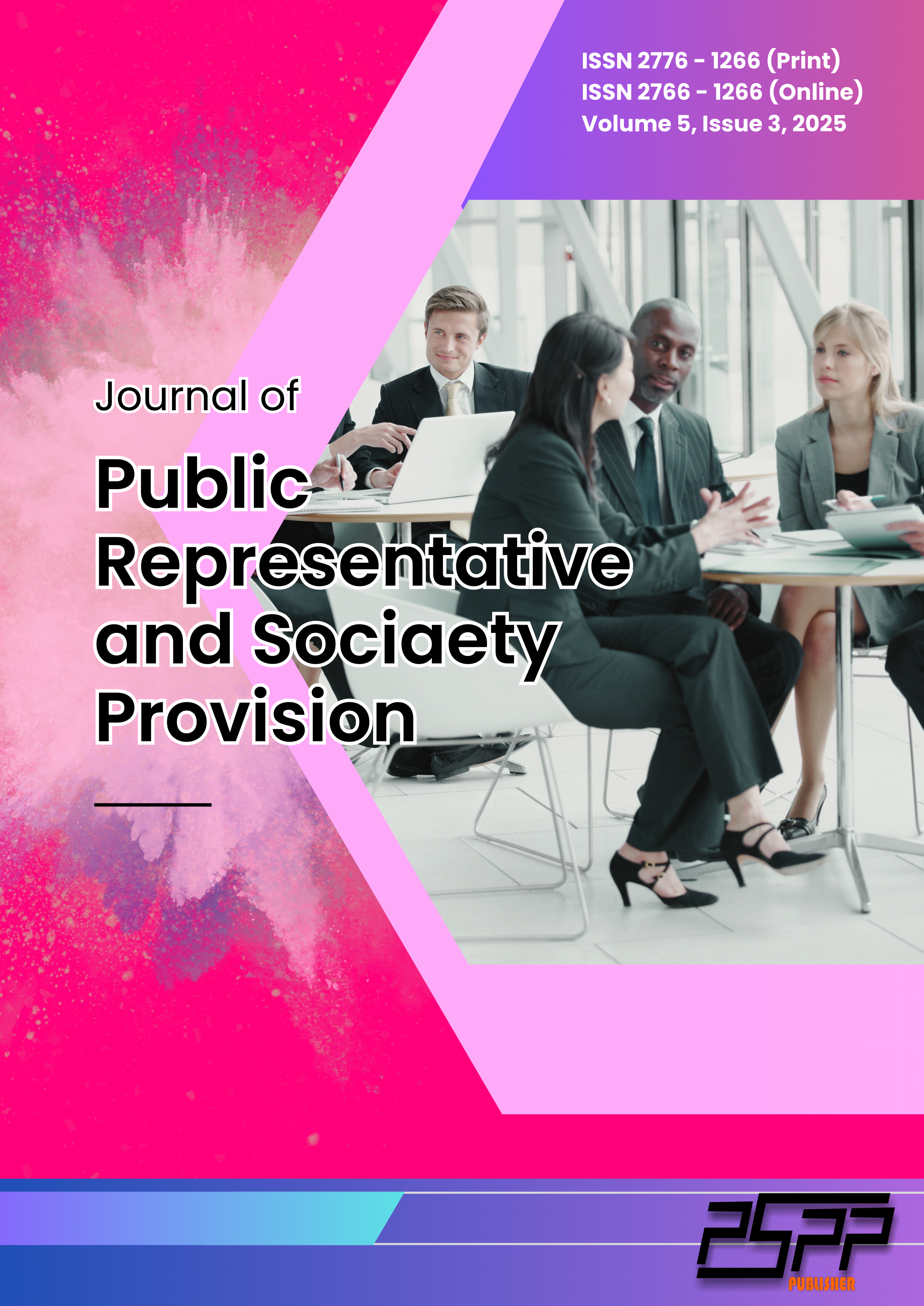Research Trend on Korean Wave: a Bibliometric Study (2015-2025)
DOI:
https://doi.org/10.55885/jprsp.v5i3.730Keywords:
Korean Wave, Bibliometric Analysis, Publication Frequency, Co-Occurrence, Co-AuthorsipAbstract
This study maps trends in Korean Wave-themed scholarly publications from 2015 to 2025 to contribute to academic literature and guide researchers and practitioners in addressing information needs influenced by popular culture. Using a descriptive quantitative approach with bibliometric analysis, data were collected from Google Scholar via Publish or Perish software with the keywords “Korean Wave” AND “Bibliometrics.” Ninety-nine articles were analyzed after cleaning in Microsoft Excel, with visualization conducted in VOSviewer through network, overlay, and density maps. Validation was performed by reviewing 10% of abstracts and checking metadata consistency. The analysis identified six main keyword clusters linking the Korean Wave to consumer behavior, cultural diplomacy, social media, and tourism. Overlay visualizations revealed a thematic shift from descriptive to analytical research, with emerging trends such as “art diplomacy” and “consumer behavior.” Co-authorship analysis showed limited collaboration among authors despite the presence of active research groups. Dominant topics include tourism, drama series, music, and beauty. The findings demonstrate the effectiveness of bibliometric methods in mapping Korean Wave research dynamics within Library and Information Science, providing conceptual insights into thematic development and scholarly networks. Future research is advised to utilize reputable databases like Scopus or Web of Science and incorporate qualitative approaches for a more comprehensive understanding .References
Abd. Wahab, N., Mohd Yusof, R., Zainuddin, Z., Shamsuddin, J. N., & Mohamad, S. F. N. (2023). Charting future growth for Islamic finance talents in Malaysia: a bibliometric analysis on the Islamic finance domains and future research gaps. Journal of Islamic Accounting and Business Research, 14(5), 812-837. https://doi.org/10.1108/JIABR-02-2022-0045
Anggraini, P. G. S., & Yuadi, I. (2023). Tren Publikasi Climate Change (Perubahan Iklim) Tahun 2020-2023 Pada Scopus. JIPI (Jurnal Ilmu Perpustakaan dan Informasi), 8(2), 213-231. https://doi.org/10.30829/jipi.v8i2.15917
Arriyuka, O. V., & Yumitro, G. (2024). K-Pop and Consumerism Culture: A Bibliometric Analysis Review. Ganaya: Jurnal Ilmu Sosial dan Humaniora, 7(4), 1-12. https://doi.org/10.37329/ganaya.v7i4.3387
Balqis, R. P. (2023). Fenomena Budaya Korean Wave Terhadap Perubahan Gaya Hidup Remaja Gampong Hagu Teungoh Lhokseumawe. At-Tabayyuun: Journal Islamic Studies, 5(2), 99-122. https://doi.org/10.47766/atjis.v5i2.3199
Batra, S., Saini, M., Yadav, M., & Aggarwal, V. (2023). Mapping the intellectual structure and demystifying the research trend of cross listing: a bibliometric analysis. Managerial Finance, 49(6), 992-1016. https://doi.org/10.1108/MF-07-2022-0330
Chan, G. H. (2024). Enhancing digital literacy in education: educational directions. Education+ Training, 66(1), 127-142. https://doi.org/10.1108/et-09-2022-0390
Chung, W. J., & Jeong, C. (2024). The role of social media engagement in the purchase intention of South Korea's popular media (Hallyu) tourism package: based on uses and gratifications theory. Asia Pacific Journal of Tourism Research, 29(1), 17-30. https://doi.org/10.1080/10941665.2024.2308850
González-Valiente, C. L., Costas, R., Noyons, E., Steinerová, J., & Šušol, J. (2021). Terminological (di) similarities between information management and knowledge management: a term co-occurrence analysis. Mobile Networks and Applications, 26(1), 336-346. https://doi.org/10.1007/s11036-020-01643-y
Gunawan, A., Hasyim, W., Putih, M., Wirjawan, T. W., Gopar, I. A., & Stephanie, S. (2025). A comprehensive bibliometric study of digital leadership influence on technopreneurial success. Aptisi Transactions on Technopreneurship (ATT), 7(2), 492-502. https://doi.org/10.34306/att.v7i2.498
Hogarth, H. K. K. (2013). The Korean wave: An Asian reaction to western-dominated globalization. Perspectives on Global Development and Technology, 12(1-2), 135-151.
Hong, S. K., Park, S., Park, D., & Oh, S. (2019). Geography of Hallyu studies: Analysis of academic discourse on Hallyu in international research. Korea journal, 59(2), 111-143.
Ismail, A., Munsi, H., Yusuf, A. M., & Hijjang, P. (2025). Mapping one decade of identity studies: a comprehensive bibliometric analysis of global trends and scholarly impact. Social Sciences, 14(2), 92. https://doi.org/10.3390/socsci14020092
Kim, W. B., Lee, H. K., & Kang, Y. (2024). How Do International Students Idealize Beauty Standards? A Study of Vietnamese Students Living in Korea. Journal of the Korean Society of Clothing and Textiles, 48(2), 328-349. https://doi.org/10.52660/jksc.2024.30.1.130
Kwon, Y. J. (2020). Rituals and Myths of Korean Skin Care Practices: The Emergence of K-beauty in the Global Marketplace. Journal of the Korean Society of Costume.
Leung, S. (2012). Catching the K-Pop wave: globality in the production, distribution, and consumption of South Korean popular music. Senior Capstone Projects, 149, 1-85.
Li, J., Miao, Q., Zou, Z., Gao, H., Zhang, L., Li, Z., & Wang, N. (2024). A review of computer vision-based monitoring approaches for construction workers’ work-related behaviors. IEEE Access, 12, 7134-7155. https://doi.org/10.1109/ACCESS.2024.3350773
Li, S., & Yang, F. (2023). Green library research: A bibliometric analysis. Public Library Quarterly, 42(4), 424-443. https://doi.org/10.1080/01616846.2022.2116886
Lou, W., & Qiu, J. (2014). Semantic information retrieval research based on co-occurrence analysis. Online Information Review, 38(1), 4-23. https://doi.org/10.1108/OIR-11-2012-0203
Majumdarr, S., Dasgupta, S. A., & Farooq, R. (2023). Open innovation and firm performance in emerging economies: a bibliometric and TCCM analysis review. Management Decision. https://doi.org/10.1108/MD-10-2022-1484
Sedighi, M. (2016). Application of word co-occurrence analysis method in mapping of the scientific fields (case study: the field of Informetrics). Library review, 65(1/2), 52-64. https://doi.org/10.1108/LR-07-2015-0075
Shin, E. J. (2021). Embedded librarians as research partners in South Korea. Journal of Librarianship and Information Science, 53(3), 466-474. https://doi.org/10.1177/0961000620962550
Syzdykbayeva, A. D., Abdigapbarova, U. M., Knissarina, M. M., Seidualiyeva, A. N., & Mirza, N. V. (2025). Network communication culture, digital etiquette, online community of university teachers and students: bibliometric mapping of the literature A. Образование и наука, 27(4), 97-121.
Vasconcelos, R. N., Costa, D. P., Duverger, S. G., Lobão, J. S., Cambuí, E. C., Lentini, C. A., ... & Porsani, M. J. (2023). Bibliometric analysis of surface water detection and mapping using remote sensing in South America. Scientometrics, 128(3), 1667-1688. https://doi.org/10.1007/s11192-022-04570-9
Yudanegara, A., Saputera, D., & Muttaqin, R. (2023). Smart Digital Content Marketing in Embracing Indonesian Millennial Consumers. Relevance: Journal of Management and Business, 6(2), 188-203. https://doi.org/10.61100/tacit.v2i2.204
Downloads
Published
How to Cite
Issue
Section
License
Copyright (c) 2025 Journal of Public Representative and Society Provision

This work is licensed under a Creative Commons Attribution-ShareAlike 4.0 International License.


















